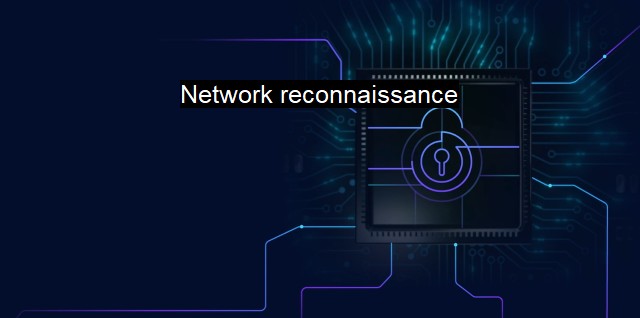What is Network reconnaissance?
Staying Ahead of Cybersecurity Threats: The Importance of Network Reconnaissance in Identifying Potential Vulnerabilities
In the realm of cybersecurity and antivirus technology, Network Reconnaissance plays a pivotal role as an essential course of action performed prudently by security analysts and, contradictorily, by cybercriminals. It is necessary to comprehend this specific term to clearly understand its significant weight within the current era of information technology.Network Reconnaissance, also known as Network Recon, is a phase particularly undertaken during the gathering of information related to a targeted computer network. It involves identifying network hosts and understanding the architecture and systems particularly to exploit vulnerabilities. At the most fundamental level, it aims at discovering potential entry points into a network.
The separation between ethical experts and cybercriminals comes down to the intent behind conducting Network Reconnaissance. An ethical hacker or a cybersecurity analyst conducts network reconnaissance as part of an authorized penetration test or network audit. Their motive is to find possible vulnerabilities in the system and rectify the issues to enhance the technology. Contrarily, malicious actors employ the same tools and techniques with the objective of identifying weaknesses that they can exploit to gain illegal access, filch sensitive data, disrupt operations, or propagate malware within a system network.
At the granular level, Network Reconnaissance can be broken down into two subsets - active and passive reconnaissance. Active Network Reconnaissance implies direct interaction with computer networks to garner information about the system. This could involve raw data transfers, scanning open ports, or even layering simple pings to gauge the online presence of a host. Any activities that might alert intrusion detection systems are considered active reconnaissance.
Contrastingly, passive Network Reconnaissance involves gathering data without directly engaging or sending data to the target network. This can include studying company websites, reading employee posts on public forums, and even going through job postings to grasp companies' technologies. Techniques such as network traffic sniffing, which involves using a sniffer tool to capture network traffic patterns, can be used in passive reconnaissance. Both procedures, combined in an ordered operation, could stretch over weeks, even months, depending on the planned significance, scope, and security of the intended network.
Speaking in terms of personal and organizational security measures, knowledge about Network Reconnaissance is crucial regardless of its potential misuse by threat actors. It offers companies, corporations, or even personal users an avenue for preemptive actions to overall network protection. One method of curbing illicit reconnaissance activities is obscuring or falsifying data about network systems. Setting up intrusion detection systems is another commonly followed approach in fortifying the network against potential security breaches and alerting administrators about any reconnaissance activities. Antivirus software also contributes to these security measures by countering potential threats.
Crucial to the conversation on preventative measures is understanding that reconnaissance accomplishes only the gathering of information; making any vulnerability exploitable remains a separate subsequent operation. Understanding these two operations are separate helps scientists, analysts, cybersecurity professionals, and IT workers grasp the need for creating better-defined security cracks so that cyber-criminals find it challenging entering systems and concluding illicit operations successfully.
Over the years, networking technology has improved to identify, counter and fix potential threats or breaches in network security. Simultaneously, threat actors have refined their reconnaissance techniques. As such, Network Reconnaissance is a high-priority area within targeted fields like cybersecurity, antivirus programmers, or more extensive concepts like machine learning and artificial intelligence for its capacity to contribute to evolving prevention mechanisms. Thus, Network Reconnaissance stands as a key concept with careful attention required both in terms of managing its illicit implementation and using the practice to secure our data better. Subsequently, industries alongside individuals alike must comprehend, keep up with and responsibly employ this form of network protection to ensure tight-knit security to their systems.

Network reconnaissance FAQs
What is network reconnaissance?
Network reconnaissance is the process of gathering information about a network or system. This can include identifying active hosts, finding open ports, identifying services and applications on those ports, and mapping out the network topology.Why is network reconnaissance important in cybersecurity?
Network reconnaissance helps cybersecurity professionals to identify potential attack vectors that attackers could exploit. By understanding the vulnerabilities in their network or system, organizations can take steps to protect themselves and mitigate the risk of a successful attack.What are some common tools and techniques used for network reconnaissance?
Some common tools and techniques used for network reconnaissance include port scanning, network mapping, banner grabbing, and OS fingerprinting. These tools help cybersecurity professionals to identify potential vulnerabilities in a network or system, which can be used to develop an effective defense strategy.Can antivirus software detect network reconnaissance activities?
Antivirus software may be able to detect some types of network reconnaissance activities, such as port scanning or malware distribution. However, it is not a foolproof solution, as attackers can use sophisticated techniques to evade detection. This is why it's important to use multiple security measures, such as intrusion detection systems, firewalls, and network segmentation, to protect against potential threats.| | A | | | B | | | C | | | D | | | E | | | F | | | G | | | H | | | I | | | J | | | K | | | L | | | M | |
| | N | | | O | | | P | | | Q | | | R | | | S | | | T | | | U | | | V | | | W | | | X | | | Y | | | Z | |
| | 1 | | | 2 | | | 3 | | | 4 | | | 7 | | | 8 | | |||||||